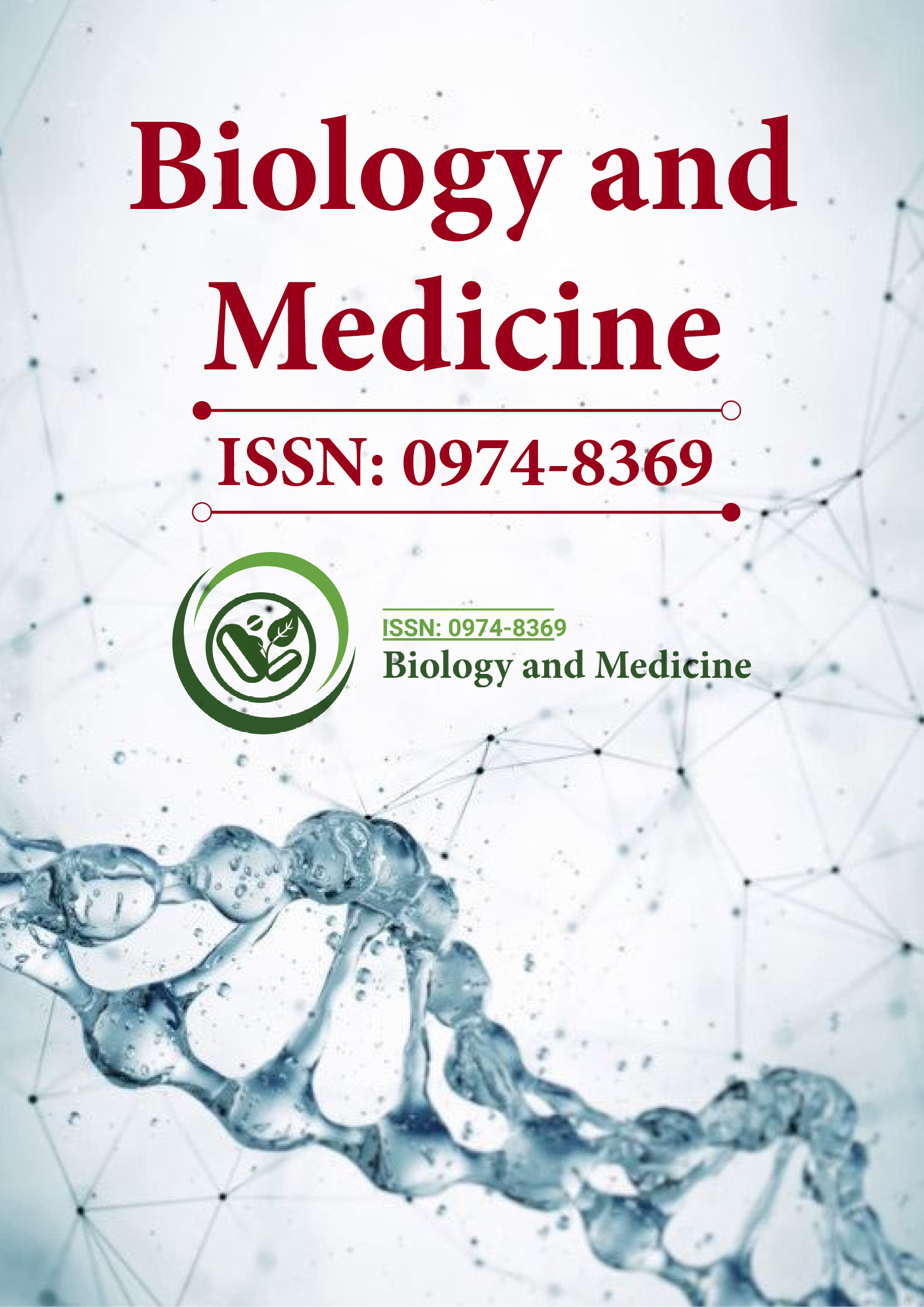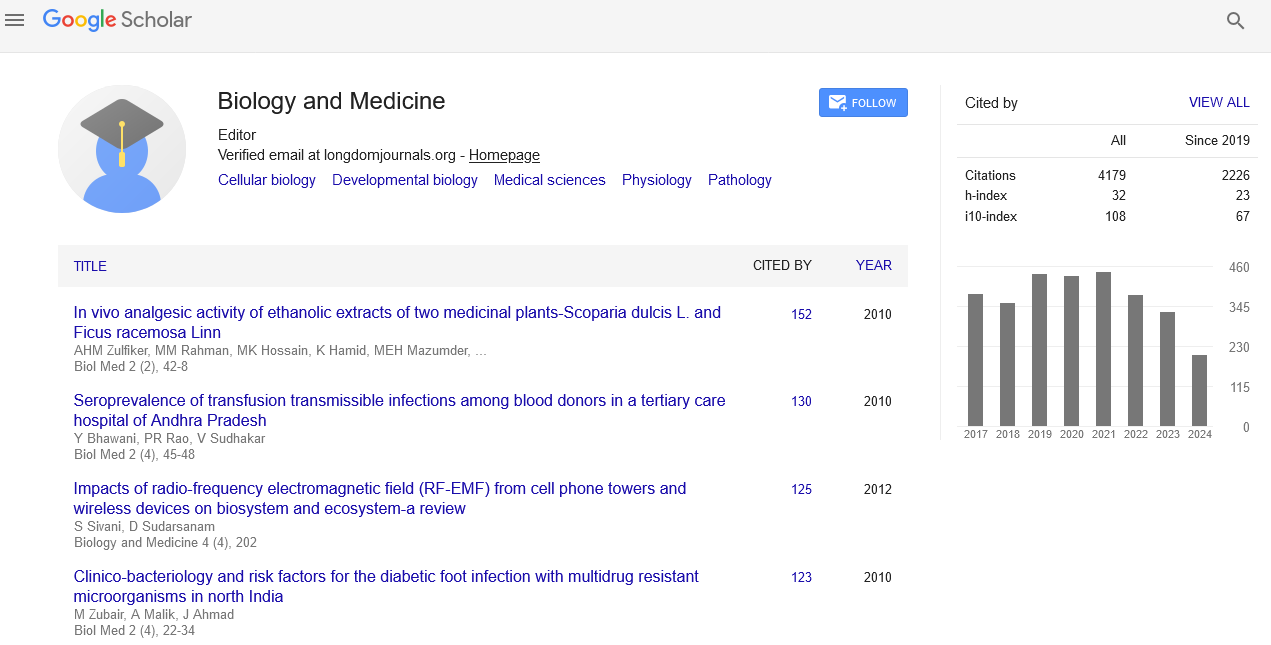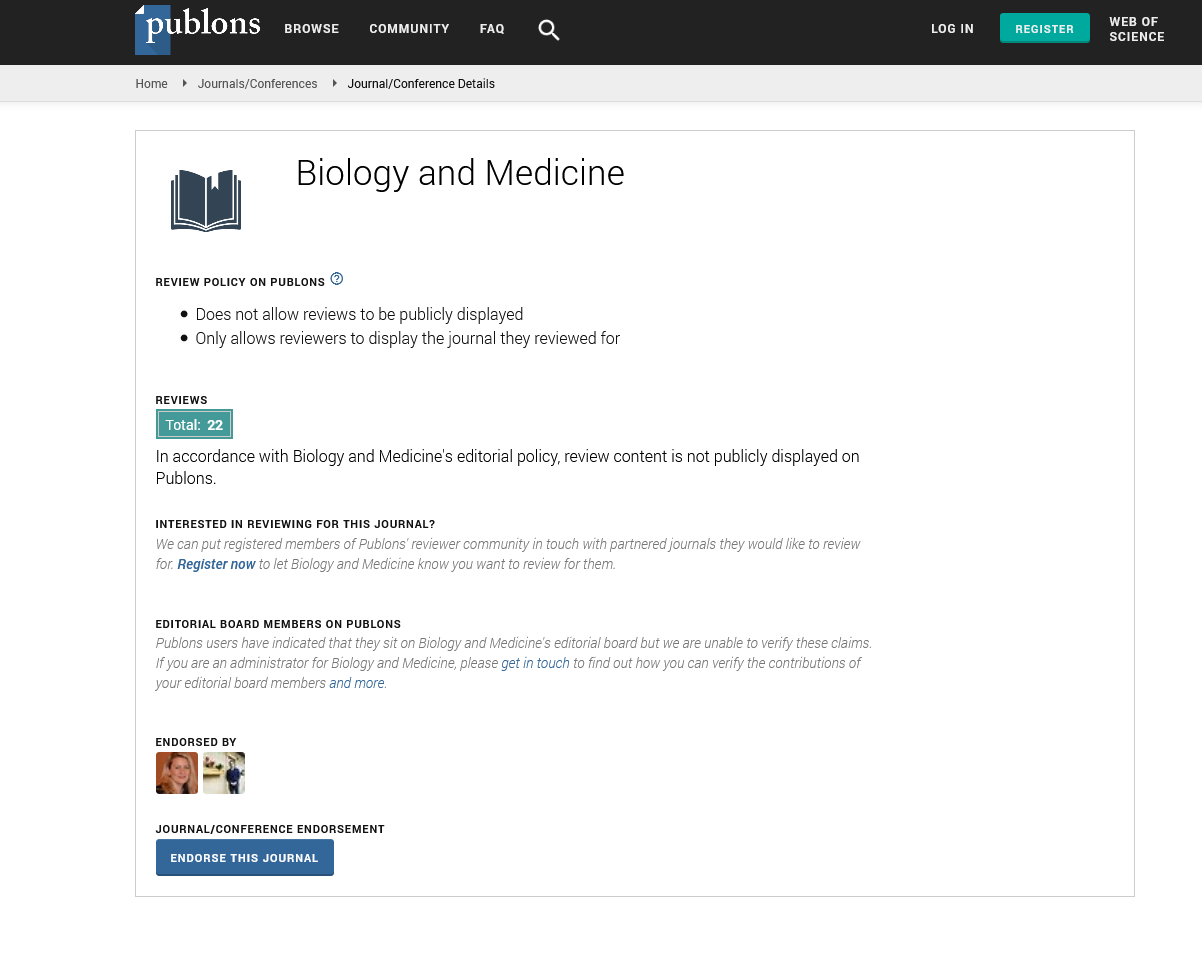Indexed In
- Open J Gate
- Genamics JournalSeek
- CiteFactor
- Cosmos IF
- Scimago
- Ulrich's Periodicals Directory
- Electronic Journals Library
- RefSeek
- Hamdard University
- EBSCO A-Z
- Directory of Abstract Indexing for Journals
- OCLC- WorldCat
- Proquest Summons
- Scholarsteer
- ROAD
- Virtual Library of Biology (vifabio)
- Publons
- Geneva Foundation for Medical Education and Research
- Google Scholar
Useful Links
Share This Page
Journal Flyer

Open Access Journals
- Agri and Aquaculture
- Biochemistry
- Bioinformatics & Systems Biology
- Business & Management
- Chemistry
- Clinical Sciences
- Engineering
- Food & Nutrition
- General Science
- Genetics & Molecular Biology
- Immunology & Microbiology
- Medical Sciences
- Neuroscience & Psychology
- Nursing & Health Care
- Pharmaceutical Sciences
Opinion Article - (2025) Volume 17, Issue 4
Nanotechnology in Medicine: Small Machines with Big Potential
Maria Rioz*Received: 12-Feb-2025, Manuscript No. BLM-25-28793; Editor assigned: 14-Feb-2025, Pre QC No. BLM-25-28793 (PQ); Reviewed: 28-Mar-2025, QC No. BLM-25-28793; Revised: 07-Mar-2025, Manuscript No. BLM-25-28792 (R); Published: 14-Mar-2025, DOI: 10.35248/0974-8369.25.17.765
Description
Nanotechnology, defined as the manipulation of matter at the atomic or molecular scale, is increasingly being applied to the medical field, offering a new frontier in diagnostics, drug delivery, and treatment modalities. By utilizing materials at the nanoscale, medical professionals can develop innovative approaches to some of the most pressing challenges in modern healthcare. From targeted cancer therapies to smart sensors capable of detecting diseases at the earliest stages, nanotechnology is poised to revolutionize the medical landscape.
While the potential of nanomedicine is immense, it also raises significant questions regarding safety, ethics, and regulation. This article explores the potential applications of nanotechnology in medicine, addresses the challenges it presents, and highlights the need for a thoughtful, evidence-based approach to its integration into clinical practice.
Applications of nanotechnology in medicine
One of the most promising applications of nanotechnology in medicine is the targeted delivery of drugs. Traditional drug delivery systems often suffer from limitations such as poor bioavailability, off-target effects, and systemic toxicity. Nanoparticles, with their minuscule size and high surface area, can be engineered to carry therapeutic agents directly to the affected tissues, minimizing side effects and improving the efficacy of treatments.
For example, nanoparticles can be designed to recognize and bind to specific cells or tissues based on the presence of molecular markers. In cancer therapy, nanoparticles can be engineered to deliver chemotherapeutic agents directly to tumor cells, sparing healthy tissue and reducing the adverse effects associated with conventional chemotherapy. This approach has already shown promise in preclinical studies and early clinical trials, where liposomes and polymeric nanoparticles are being tested for their ability to deliver drugs to cancer cells with increased precision.
Cancer treatment
Nanotechnology has the potential to transform cancer treatment by enabling more effective therapies. Nanorobots and nanoparticles can not only carry drugs but also perform functions such as detecting and imaging tumors, facilitating early diagnosis, and even directly targeting and destroying cancer cells. Nanomedicine offers the ability to design multifunctional nanoparticles that can carry both imaging agents and therapeutic drugs, providing doctors with a real-time view of the tumor’s response to treatment.
For instance, gold nanoparticles and quantum dots are being explored as agents for cancer imaging and therapy. Their unique optical properties enable better tumor detection via imaging techniques such as MRI and CT scans, while their ability to target cancer cells makes them effective in delivering treatments directly to tumors.
Early disease detection
Nanotechnology also holds the potential for the early detection of diseases, particularly those that are difficult to diagnose in their early stages. By utilizing nanosensors, medical professionals can detect biomarkers associated with diseases like cancer, neurodegenerative disorders, and cardiovascular diseases at very low concentrations, even before symptoms appear.
Nanosensors can be integrated into diagnostic devices to monitor biological markers in blood, urine, or saliva, providing rapid, non-invasive tests for various conditions. For example, nanosensors have been developed to detect early-stage cancers by identifying specific genetic mutations or proteins associated with tumor development, enabling earlier interventions and better prognoses for patients.
Toxicity and biocompatibility
While the potential applications of nanotechnology in medicine are vast, significant concerns remain regarding the toxicity and biocompatibility of nanomaterials. The small size of nanoparticles means they can easily enter cells and tissues, potentially interacting with biological systems in unexpected ways. Toxicity could arise if nanoparticles accumulate in organs or tissues, leading to adverse health effects.
The long-term effects of nanomaterials in the body are still not fully understood, and it is crucial that thorough toxicological studies be conducted to assess the safety of nanoparticles and nanorobots before they are widely adopted in clinical practice. In particular, the potential for nanoparticles to cause immune system reactions, accumulate in the liver, lungs, or other organs, or interfere with normal cell functions must be closely monitored.
Regulatory oversight and testing
The development and application of nanotechnology in medicine present a significant challenge to existing regulatory frameworks. Current regulations for medical devices and pharmaceuticals were not designed with nanotechnology in mind, which has led to concerns about the adequacy of existing standards for ensuring the safety and efficacy of nanomedicine products.
Rigorous regulatory testing will be necessary to evaluate the safety of nanomedical devices and their long-term effects on human health. Regulatory agencies such as the FDA and the European Medicines Agency (EMA) will need to create specialized guidelines for nanomedicines to ensure that products meet the necessary safety and efficacy standards.
Ethical concerns
As with many emerging technologies, nanotechnology in medicine raises ethical concerns, particularly regarding privacy, informed consent, and access to treatment. The use of nanorobots to perform tasks at the molecular level within the human body could lead to concerns about surveillance and control, as well as the potential for unintended consequences if nanomaterials are not properly regulated.
Additionally, as with other cutting-edge medical technologies, there is the risk of disparities in access. The cost of developing and implementing nanomedicine could limit its availability to certain populations, potentially exacerbating healthcare inequality.
Conclusion
Nanotechnology holds enormous promise for revolutionizing the field of medicine, offering solutions for targeted drug delivery, cancer treatment, early disease detection, and more. The potential benefits are undeniable, and advances in nanorobotics, nanosensors, and nanoparticles could fundamentally change the way we approach healthcare.
Citation: Patel S (2025). Aging and Medicine: Reversing the Biological Clock. Bio Med. 17:765.
Copyright: © 2025 Patel S. This is an open-access article distributed under the terms of the Creative Commons Attribution License, which permits unrestricted use, distribution and reproduction in any medium, provided the original author and source are credited.


